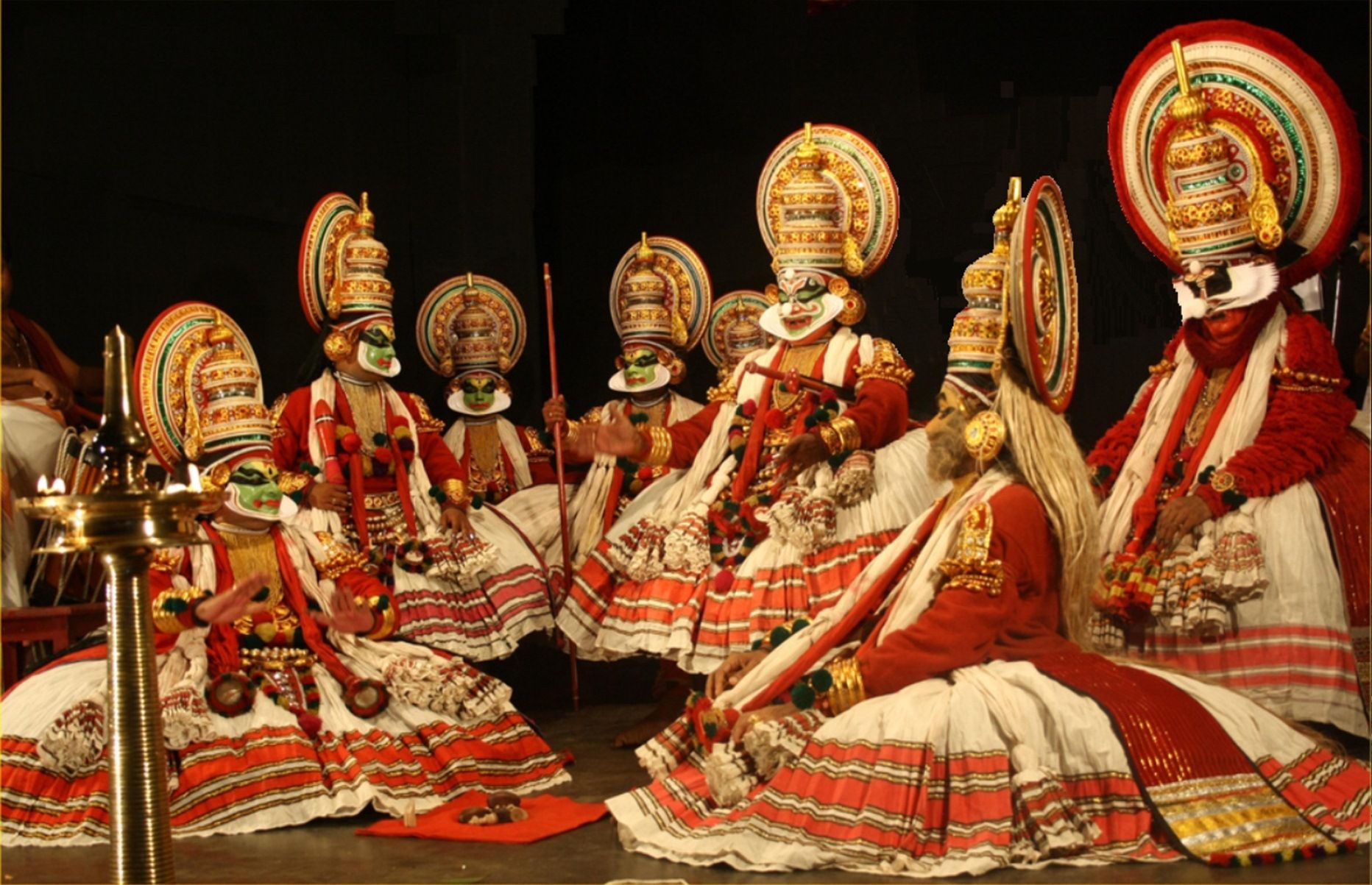Kathakali: The Majestic Dance-Drama of Kerala

Kathakali, one of the most visually stunning classical dance forms of India, originates from the southwestern state of Kerala. Known for its elaborate costumes, dramatic expressions, and powerful storytelling, Kathakali is a unique blend of dance, theater, and music. This dance-drama captivates audiences with its larger-than-life characters, intricate hand gestures, and dynamic movements, making it one of India's most distinctive art forms.
Historical Origins and Evolution
Kathakali, meaning "story-play," emerged in the 17th century as a temple art form, deeply rooted in Kerala’s religious and cultural traditions. It evolved from earlier theatrical traditions like Kutiyattam and Krishnanattam, incorporating elements of acting, dance, and music. Traditionally performed in temple courtyards and palace grounds, Kathakali narrates epic tales from Hindu mythology, particularly the Ramayana, Mahabharata, and Puranas.
Unlike other classical dance forms, Kathakali is performed exclusively by male dancers, who portray both male and female characters. The dance was once reserved for royalty and spiritual gatherings but has now gained worldwide recognition as a unique and powerful art form.
Elements of Kathakali Dance
Kathakali is a highly stylized dance-drama where storytelling is conveyed through precise body movements, facial expressions, and symbolic gestures. The key elements include:
- Mudras (Hand Gestures)
- Over 500 hand gestures are used to communicate complex emotions, dialogues, and narratives.
- Facial Expressions (Navarasa)
- Kathakali performers master nine distinct facial expressions, known as Navarasa, which convey emotions like love, anger, fear, and devotion.
- Body Movements and Postures
- The dance involves slow, deliberate movements, dramatic stances, and controlled footwork.
A typical Kathakali performance begins in the evening and can last all night, featuring slow introductions, dramatic character reveals, and intense battle scenes.
Costume and Makeup: A Visual Spectacle
One of the most striking aspects of Kathakali is its elaborate costumes and makeup, which define the nature of each character.
- Makeup (Chutti) – Performers wear bold facial paint in distinct colors to signify different character types:
- Green (Pacha) – Noble and heroic characters, such as gods and kings.
- Red (Tati) – Villains and aggressive characters.
- Black (Kari) – Demon-like figures and evil spirits.
- Yellow/White (Minukku) – Sages, women, and peaceful characters.
- Costumes – Heavy, layered skirts, ornate headgear, and elaborate jewelry give the characters a grand and theatrical appearance.
Musical Accompaniment
Kathakali performances are accompanied by live Carnatic music and percussion instruments like:
- Chenda – A powerful drum that sets the dramatic tone.
- Maddalam – A barrel-shaped drum that enhances rhythm.
- Ilathalam – Small cymbals used for timing.
- Shankh (Conch) – Used during auspicious moments.
The vocals in Kathakali are sung in a style called Sopanam, creating a deep, spiritual connection between music and performance.
Global Influence and Recognition
Kathakali has gained worldwide acclaim, with performances staged in theaters and cultural festivals across the globe. Renowned artists like Kalamandalam Gopi and Kalamandalam Krishnan Nair have played a crucial role in preserving and promoting Kathakali. Many institutions, such as Kerala Kalamandalam, continue to train new generations in this ancient art form.
Kathakali is more than just a dance—it is a powerful theatrical experience that blends mythology, art, and emotion. Its grand costumes, vibrant expressions, and captivating storytelling make it one of India's most unique and mesmerizing classical dance forms. As it continues to enchant audiences worldwide, Kathakali remains a proud symbol of Kerala’s rich cultural heritage and artistic excellence.